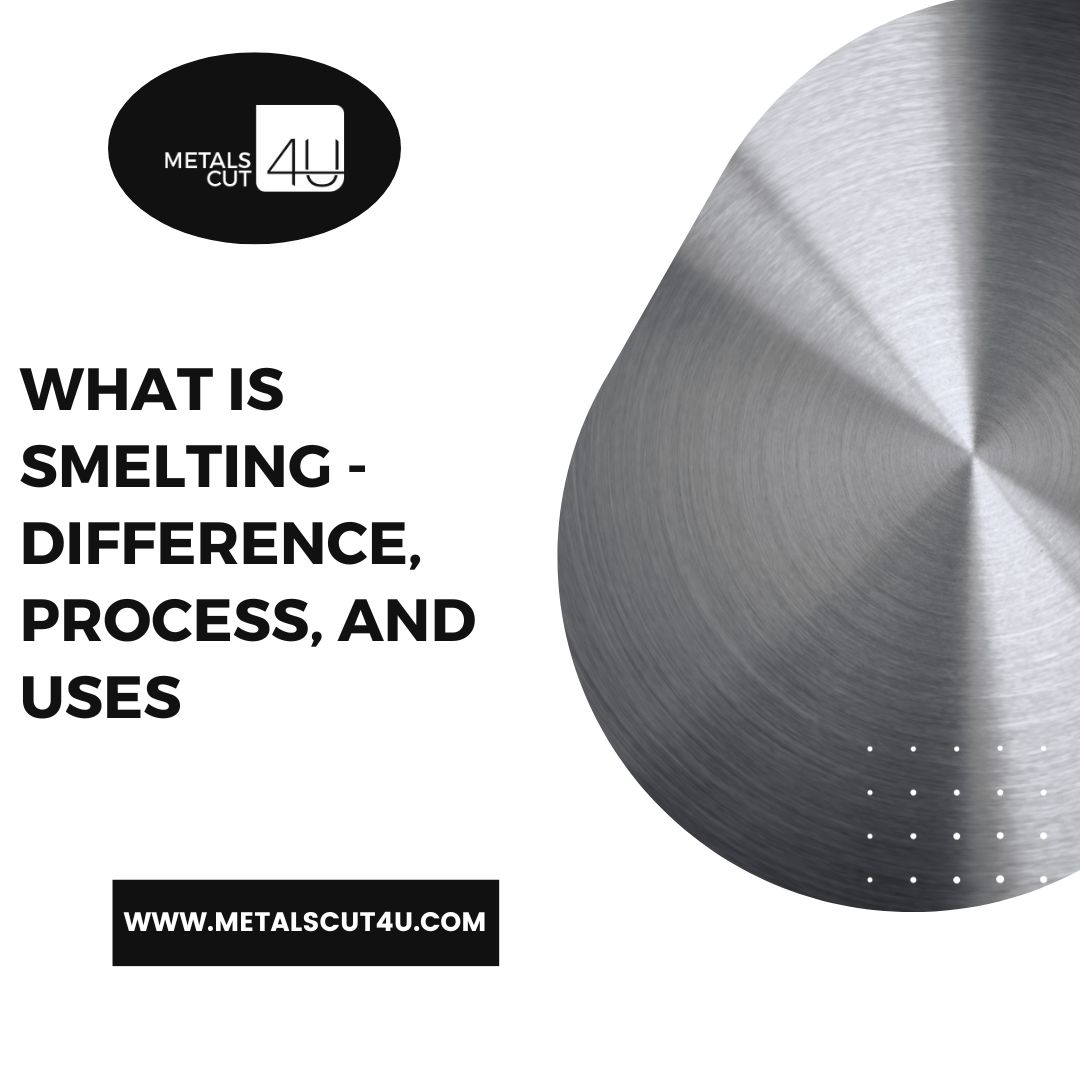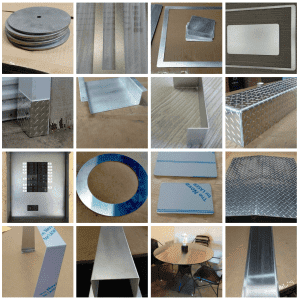What is Smelting - Difference, Process, And Uses

Metal smelting is a process that has been around for thousands of years, and it has played a vital role in human civilization. It is the process of extracting metal from its ore. This process has allowed humans to create tools, structures, and innovations that have shaped our world. Smelting is crucial for modern industries. It turns raw ore into useful metals for various applications, like buildings, cars, planes, and electronics.
In this article, we'll understand what the smelting process is, how it differs from melting, the tools and materials needed, and other important information.
What is Smelting?
The extraction of metal from its ore is known as the smelting. However, the concept of smelting involves more than simply extracting metal from a solid rock mass.
Ore represents a complex amalgamation of both rock and metal. Due to the common oxidation of the metal within the ore, a chemical reaction is necessary to eliminate the oxygen content. As a result, the metal-containing ore must be included in a blast furnace together with fuel and flux, with the latter acting as a chemical agent for purification.
Within the confines of the furnace, the molten metal transforms. Eventually, it culminates in the form of a "bloom" – a mass of intensely heated metal removed from the furnace using specialized tongs. Furthermore, the smelting process produces a byproduct known as slag, which is an impurity separated from the metal ore itself.
What is the Difference Between Smelting vs Melting?
Here is the difference between smelting vs melting:
|
Process |
Objective |
Process Description |
End Product |
Common Uses |
|
Smelting |
To extract pure metal from its ore. |
Heating ore with a reducing agent to separate impurities. |
Pure metal, often in the form of a metal bar or ingot. |
Obtaining metals from their ores, e.g., iron from iron ore, copper from copper ore. |
|
Melting |
To turn a solid metal into its liquid form. |
Heating a solid metal until it reaches its melting point. |
Molten metal. |
Casting, reshaping metal, creating molds for various products, and recycling metal. |
Thus, smelting is the process before melting, serving as the initial step in transforming raw ore for further processing.
Which Metal Is Used In Smelting?
1. Iron
Primary Metal for Smelting: Iron is the primary and most commonly used metal in the process of smelting. Its versatility and abundance make it important for metallurgy.
Steel Production: Iron ore is the raw material for steel production. In the smelting process, iron ore is heated, leading to the separation of iron from impurities. This iron-carbon combination forms the basis for the production of steel. This versatile material has revolutionized modern industry and construction.
Pig Iron Formation: In the smelting process, sometimes the resulting iron contains more carbon than is required for steel production. It leads to the formation of pig iron, a crucial intermediate product. Although less refined than steel, Pig iron is used in industrial facilities as a raw material for various manufacturing processes.
2. Aluminum
Versatile Material: Aluminum is another key base metal that undergoes smelting processes. Aluminum is known for its lightweight and corrosion-resistant properties, which are used in various applications.
Applications: The smelting of aluminum is essential for its use in various industries, including aerospace, automotive, construction, and consumer goods. The ease of smelting aluminum has made it a critical component in modern manufacturing.
3. Bronze
Historical Importance: Bronze holds immense historical importance as an alloy composed primarily of copper and tin. This alloy has been essential for smelting processes for centuries, contributing to the advancement of ancient civilizations.
Artifacts and Artwork: Bronze smelting has been responsible for creating numerous historical artifacts and artistic pieces. From sculptures to tools and weaponry, bronze remains an enduring testament to the artistry and engineering of the past.
4. Silver
Precious Metal: Smelting is crucial for extracting silver from its ores. Silver, a precious metal, has been revered for its shining appearance and economic value throughout history.
Applications: The purified silver obtained through smelting is used in various applications. It is highly sought after for jewelry, as a form of currency, and in numerous industrial applications, including its use in electrical contacts and mirrors.
5. Copper
Versatile Metal: Copper is a versatile and widely used metal that undergoes smelting processes to extract and refine it. Known for its excellent electrical conductivity and corrosion resistance, copper has a broad range of applications.
Essential for Electronics: Copper plays a crucial role in the electronics industry due to its exceptional electrical conductivity. It is used in wiring, circuitry, and components in electronic devices, making it an essential metal in the modern world.
Tools And Materials Required For Smelting
Here are the tools and materials needed for the smelting process:
1. Smelting Furnace
Variety of Furnaces: The type of smelting furnace used depends on the metal extracted and specific process requirements. Options include blast furnaces, electric arc furnaces, or reverberatory furnaces.
Crucial Role: These furnaces provide a controlled environment where ore is heated to high temperatures, facilitating metal separation from impurities.
2. Fuel Source
Creating High Temperatures: To achieve the necessary temperatures required for smelting, a fuel source is essential. Common fuel sources include coal, coke, natural gas, and electricity.
Energy Input: The fuel source provides the energy required to heat the furnace to the necessary smelting temperature.
3. Reducing Agent
Role in Reduction: A reducing agent, such as charcoal or coke, is used to reduce metal oxides into their elemental forms during the smelting process.
Chemical Reaction: The reducing agent initiates chemical reactions that lead to the separation of metal from its compounds.
4. Flux
Impurity Removal: Flux substances, like limestone, silica, or borax, are added to the furnace to facilitate the removal of impurities from the metal.
Slag Formation: Flux also contributes to the formation of liquid slag, which acts as a separation layer and can be easily removed from the furnace.
5. Ore
Raw Material: The fundamental raw material for smelting is the metal-bearing ore. This ore is typically crushed, processed, and sometimes concentrated before it is used in the smelting process.
Ore Selection: The type and quality of the ore are crucial factors that impact the efficiency and quality of the smelting process.
6. Protective Gear
Safety First: Personal protective equipment (PPE) is essential for operators working in smelting plants. This gear includes heat-resistant gloves, face shields, safety glasses, ear protection, and respirators.
Protection: PPE safeguards operators against extreme temperatures, toxic metal exposure, flying debris, and contact with hazardous compounds.
7. Temperature Control and Monitoring
Critical for Precision: Tools and equipment such as thermocouples, infrared thermometers, or pyrometers are necessary for measuring and controlling the temperature within the furnace.
Maintaining Ideal Conditions: Accurate temperature control is crucial to ensure the smelting process proceeds as intended.
8. Tapping Tools
Extracting Molten Metal: Tapping tools, including ladles, spoons, or specialized instruments, are required to tap and remove the molten metal and slag from the furnace.
Precision Handling: These tools are essential for the safe and efficient extraction of refined metal.
9. Casting Equipment
Shaping the Metal: After smelting, the pure metal needs to be shaped and cooled. Casting equipment, including molds or castings, tongs, and other handling tools, are used to shape the molten metal as it solidifies.
Metal product: The choice of casting equipment and techniques can influence the final form and quality of the metal product.
Each of these tools and materials is crucial for the smelting process. Combining the right furnace, fuel source, reducing agent, flux, ore, protective gear, temperature control, tapping tools, and casting equipment ensures that smelting is a precise and controlled process that transforms raw materials into valuable, refined metals.
How Smelting Process Works?
Smelting, a heat-driven method, is crucial for extracting metals from ores. It includes raw ore, heat, and a helper called a reducing agent (usually carbon or coke). The main goal of smelting is to separate the metal from unwanted stuff like oxides and silicates in the ore.
Preparation: Before smelting iron, the ore often gets smashed and ground up to make it work better with the reducing agent. This process increases the surface area of the ore, making it more effective when it comes into contact with the reducing agent.
In many cases, the ore contains impurities that must be removed for a successful smelting process. Sometimes, we even use methods like flotation or magnets to eliminate impurities and boost the metal.
Roasting: For ores with sulfur (called sulfide ores), we need to do roasting. It includes heating the iron ore with oxygen to turn the sulfur into gas and make the smelting process smoother and more efficient.
Smelting Furnace: The next step is to put the prepared iron ore into a super-hot furnace. It can be a blast furnace, electric arc furnace, or reverberatory furnace. These furnaces get as hot as 1,200 to 1,600 degrees Celsius (2,192 to 2,912 degrees Fahrenheit). This intense heat is crucial for reducing the iron ore into its elemental form.
Reduction: In the scorching furnace, the metal oxides in the ore meet the reducing agent (usually charcoal or coke). This intense heat and chemical interaction initiates a reduction process that transforms the metal oxides into the desired metal, such as metallic iron. During this reduction, some gaseous byproducts, including carbon dioxide or carbon monoxide, are also produced.
As the reduction progresses, the heavy molten metal produced from the ore sinks to the bottom of the furnace. This dense, molten metal is what we need to extract. Furthermore, the lighter impurities, often called slag, float to the surface due to their lower density. Slag contains non-metallic materials and other impurities.
Separation: After this fiery process, we take out the molten metal and the slag separately. Sometimes, we refine the metal more to remove any leftovers using methods like electrolysis or chemical leaching. The separation is crucial as it ensures that the pure metal is isolated from impurities in the form of slag.
Casting: With this separated and refined pure metal, it's ready to be cast into molds. The molten metal is poured into molds, which can vary in shape and size depending on the intended use. Here is where the metal takes its final form. We get ingots, billets, or slabs, which are raw materials for making all sorts of metal stuff.
To ensure we get the metal we want, we have to supervise and control temperature, pressure, and what's going on inside the smelting mix. It's like cooking with fire but for making important things out of metal!
Conclusion
MetalsCut4U offers high-quality custom laser-cut sheet metal that meets your precise requirements. We are committed to precision and durability, ensuring consistent and reliable performance on various metals. We focus on delivering exceptional results, whether your project involves carbon steel, aluminum, stainless steel, or any other type of metal. We're your all-in-one solution for metal needs: We cut it, bend it, and weld it - all for you.
Explore our diverse range of selections and choose your custom laser-cut sheet metal for your upcoming projects today!
FAQs
What is iron smelting?
Iron smelting is the specific smelting process used to extract iron from iron ore. This process involves reducing iron oxide to produce molten iron, which is then cast into various forms like bars or ingots.
What is the Process of melting metal called?
The process of turning solid metal into its liquid form is called melting. It involves heating the metal to its melting point, at which it becomes a molten substance.
How to melt metal without fire?
Melting metal without fire is a challenging task because it usually requires a heat source. However, advanced techniques like induction heating and laser heating can melt metal without traditional flames or open fires.
